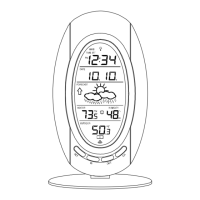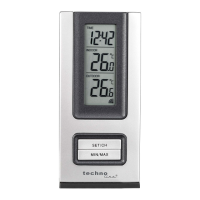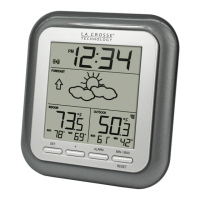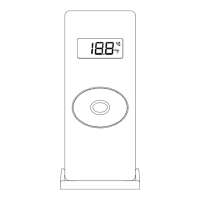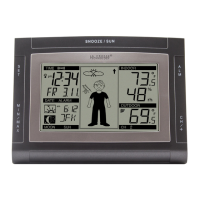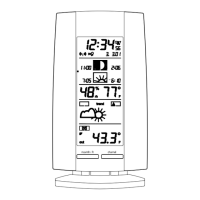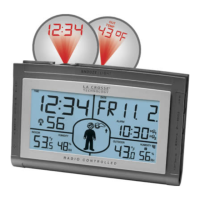5 | Page
WHAT DOES “NO” MEAN?
• If any sensor loses connection to the station for any reason, the station will show NO after 30
minutes.
• The station will search for 3 minutes every hour to reconnect with sensor.
• Hold the SENSOR button 2 seconds to search for the sensors.
• Icon will flash while searching for sensor. Outdoor area will show dashes during the
search. When sensor is received the icon will be solid.
• If no sensor received, icon disappears after 3 minutes of searching if sensor is not
found.
• NO will again show.
WHY DOES MY TEMPERATURE READING COME AND GO?
• RF (radio frequency) communication may come and go occasionally. This can be normal in
some environments (e.g., moister climates).
• If a sensor goes out, please wait 2-4 hours for it to reconnect on its own. Please be patient
– these stations can reconnect on, after many hours out.
• RF (radio frequency) communication is not always 100% on. Certain temporary conditions
can cause it to go out for a time (e.g., 100% humidity).
If a miss happens:
• If sensor loses connection to the station for any reason, the station will show NO after 30
minutes.
• The station will search for 5 minutes every hour to reconnect with sensor.
• Be sure you have good batteries. Manually search for your sensor.
Try this:
• Bring your sensor within 10 feet of your station and make sure it is connected to the station.
• After 15 minutes move the sensor into the next room with a wall between the sensor and the
station for 1 hour.
• If there is no loss of signal in that hour, move the sensor just outside.
• Continue moving the sensor back to its original location.
• If you lose connection, look for sources of interference.
WHAT IS DISTANCE | RESISTANCE | INTERFERENCE?
Distance:
• The maximum transmitting range in open air is over 330 feet (100 meters) between each
sensor and your station.
• Consider the signal path from your station to each sensor as a straight line.
• Consider the distance the station is from other electronics in the home.
Resistance:
• Each obstacle: walls, windows, vegetation, stucco, concrete, and large metal objects will
reduce the effective signal range by about one-half.
• Mounting your sensors on a metal fence can significantly reduce the effective signal range.
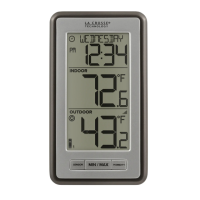
